In today’s complex economic landscape, financial well-being isn’t a matter of luck; it’s a skill set. Financial literacy—the knowledge and confidence to make informed personal finance decisions—is the cornerstone of a stable, secure future. If you feel your money controls you rather than the other way around, it’s time to stop feeling overwhelmed and start learning. Taking control of your finances is an active journey, not a passive destination.
This comprehensive guide breaks down the essential steps to boost your financial literacy and gain mastery over your hard-earned money, structured to be actionable and free from unnecessary jargon.
1. Assess Your Starting Point: The Financial Inventory
Before you can chart a course, you need to know exactly where you are. This initial step is about radical honesty regarding your current financial reality.
Know Your Cash Flow
The very foundation of financial control is understanding your cash flow: the money coming in versus the money going out.
- Calculate Net Income: Determine your actual take-home pay (net income) after all taxes, deductions, and contributions have been removed. This is the only money you truly have to work with.
- Track Every Expense: For at least one full month, track every single dollar spent. Use a dedicated app, a spreadsheet, or even a small notebook. Categorize these expenses (e.g., Housing, Groceries, Entertainment, Debt Payments). This exercise often reveals “financial leaks”—small, frequent purchases that drain significant funds over time.
- Distinguish Needs vs. Wants: After tracking, ruthlessly categorize your spending. A mortgage payment is a need; eating out every night is a want. This distinction is crucial for making informed cuts later.
2. Master the Art of Budgeting: Creating Your Spending Blueprint
A budget is not a restrictive cage; it is a tool for empowerment that gives every dollar a job. A good budget aligns your spending with your goals.
Prioritize “Pay Yourself First”
A common pitfall is waiting until the end of the month to save whatever is left. The financially literate reverse this:
$$\text{Income} – \text{Savings Goal} = \text{Expenses}$$
- Set Savings Goals: Before paying rent or buying groceries, allocate money toward your goals (Emergency Fund, Debt Repayment, Investments). Treat savings as a non-negotiable bill.
- Choose a Budgeting Method: Explore methods that fit your personality.
- The 50/30/20 Rule: 50% for Needs, 30% for Wants, 20% for Savings/Debt Repayment.
- Zero-Based Budgeting: Assign every dollar of income to a category so that Income – Expenses = 0.
Actionable Tip: Automate your savings transfers to occur on payday. If you don’t see the money, you are less likely to spend it.
3. Demystify Debt and Credit: The Two Sides of Borrowing
Understanding borrowing and credit is non-negotiable for long-term wealth building.
Debt Management Strategies
Not all debt is created equal. High-interest consumer debt (like credit cards) is the enemy of wealth creation.
- Know Your Rates: List all your debts, their outstanding balances, and, most importantly, their Annual Percentage Rates (APR).
- Choose a Payoff Plan:
- Debt Avalanche: Pay the minimum on all debts, but direct all extra money toward the debt with the highest interest rate first. This saves the most money over time.
- Debt Snowball: Pay the minimum on all debts, but direct extra money toward the debt with the smallest balance first. This provides psychological wins to keep motivation high.
Understanding Credit Scores
Your credit score (e.g., FICO or VantageScore) is your financial reputation. A good score unlocks lower interest rates on major purchases like homes and cars, saving you thousands.
- The Pillars: Learn what factors influence your score: payment history (most important), amounts owed, length of credit history, new credit, and credit mix.
- Monitor Regularly: Obtain your credit report annually from the major bureaus and check for errors.
4. The Power of Saving and Investing: Building Wealth for Tomorrow
Financial literacy moves beyond managing today’s bills; it requires planning for the future.
Building Resilience with an Emergency Fund
Before aggressively investing, you need a financial safety net. This is your Emergency Fund, kept in an easily accessible, high-yield savings account (HYSA). Aim for 3 to 6 months’ worth of essential living expenses. This fund prevents unexpected events (like a job loss or medical bill) from forcing you into high-interest debt.
Introduction to Investing
Investing allows your money to work for you through the magic of compound interest.
$$A = P(1 + r/n)^{nt}$$
Where:
- $A$ = the future value of the investment/loan, including interest
- $P$ = the principal investment amount (the initial deposit or loan amount)
- $r$ = the annual interest rate (as a decimal)
- $n$ = the number of times that interest is compounded per year
- $t$ = the number of years the money is invested or borrowed for
- Understand Risk Tolerance: How comfortable are you with the possibility of your investment value dropping? This dictates your asset allocation.
- Learn the Basics: Start by researching low-cost, diversified investment vehicles like index funds or Exchange-Traded Funds (ETFs), which track broad market performance.
- Utilize Tax-Advantaged Accounts: Prioritize retirement accounts like 401(k)s (especially if there’s an employer match) and IRAs, as these offer significant tax benefits.
5. Commit to Lifelong Financial Education
Financial literacy is not a one-time course; it’s an ongoing commitment. The financial world evolves, and so must your knowledge.
Recommended Learning Paths
Dedicate a small amount of time each week to learning.
- Books: Start with classics or highly-rated beginner guides that explain core concepts like budgeting, investing fundamentals, and managing debt.
- Reputable Online Resources: Follow established financial education websites, government resources, or reputable non-profit financial education providers. Be wary of “get rich quick” schemes found on social media.
- Podcasts and Newsletters: Use commutes or chores to listen to trusted financial podcasts or subscribe to newsletters from established financial institutions to keep current on economic trends and best practices.
- Seek Professional Guidance (When Necessary): For complex situations like estate planning or major tax questions, consulting a fee-only fiduciary financial advisor can provide valuable, unbiased expertise.
Conclusion: The Path to Financial Freedom
Improving your financial literacy is the single most empowering step you can take toward self-sufficiency. It replaces anxiety with action, confusion with clarity, and debt with growth. By consistently inventorying your finances, creating a deliberate budget, managing debt strategically, and learning to invest for the long term, you stop reacting to your money and start directing it. This shift in mindset and action is how you truly take control of your financial life and build the future you envision.



